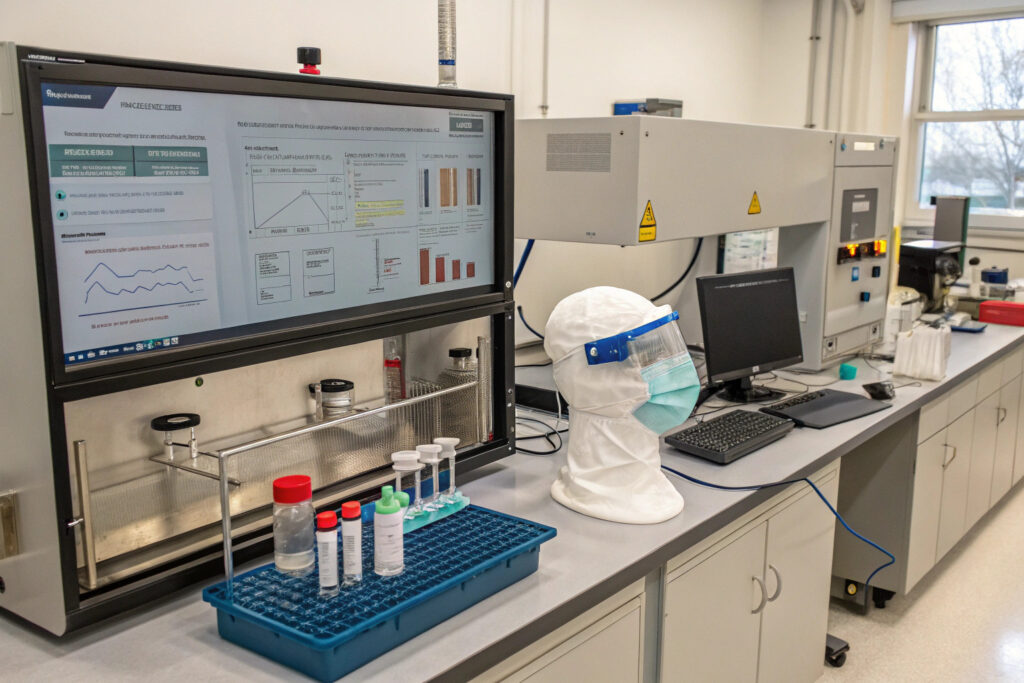Testing shrinkage after multiple washes is critical for reusable cloth masks, as dimensional stability directly impacts fit, comfort, and protection over the product's lifespan. Significant shrinkage can compromise the mask's seal, create gaps, and render sizing inaccurate—undermining both performance and customer satisfaction. Proper shrinkage testing involves standardized protocols that simulate real-world usage while providing measurable, repeatable results.
Shrinkage testing after 50 washes follows ISO 5077 or AATCC 135 standards using controlled washing conditions, precise measurement protocols, and statistical analysis to determine dimensional changes in both length and width directions. The process involves creating baseline measurements, subjecting masks to repeated washing and drying cycles under controlled parameters, then remeasuring to calculate percentage changes with industry-accepted tolerance limits.
The 50-wash threshold represents a reasonable lifespan expectation for quality reusable masks while identifying materials that degrade prematurely. This testing goes beyond simple fabric assessment to evaluate how construction methods, seam types, and multiple components interact through extended use. Let's examine the specific testing methodologies that deliver accurate, actionable shrinkage data.
What Standardized Testing Methods Provide Accurate Results?
Industry-standard protocols ensure shrinkage testing produces consistent, comparable results across different materials and manufacturers.
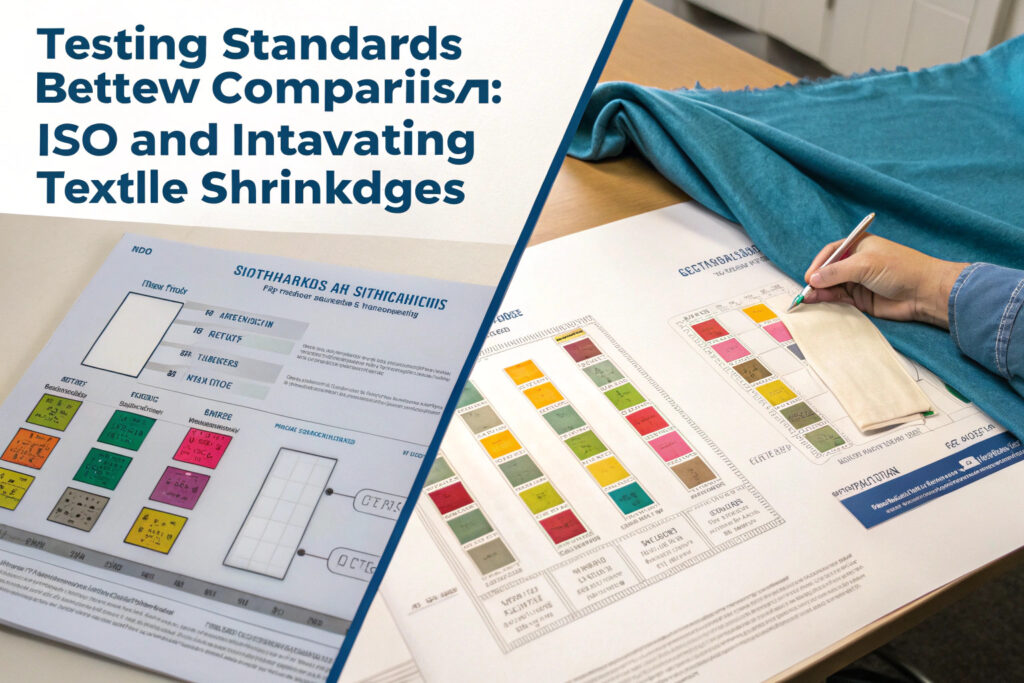
How does the ISO 5077 testing protocol work?
The ISO 5077 standard specifies washing masks in a front-loading washing machine using reference detergent at 40°C (±3°C) for 30-45 minutes per cycle, followed by line drying or tumble drying under controlled conditions. Test specimens are marked with precise measurement points before testing, then measured after conditioning at standard atmospheric conditions (20°C ± 2°C and 65% ± 4% relative humidity). The percentage dimensional change is calculated for both length and width directions after every 10 cycles up to 50 cycles.
What about AATCC 135 testing methodology?
AATCC Test Method 135 uses similar principles but with North American typical home laundry conditions—often including both line drying and tumble drying variants to simulate different consumer practices. The standard specifies normal cycle (12-15 minutes wash, 3-4 minutes spin) with 27-30 gallons of water at 41°C ± 3°C, using 66 grams of AATCC Standard Reference Detergent. Measurements are taken after conditioning in standard atmosphere.
What Equipment and Setup Ensure Testing Accuracy?
Proper laboratory equipment and specimen preparation are essential for obtaining meaningful shrinkage data.
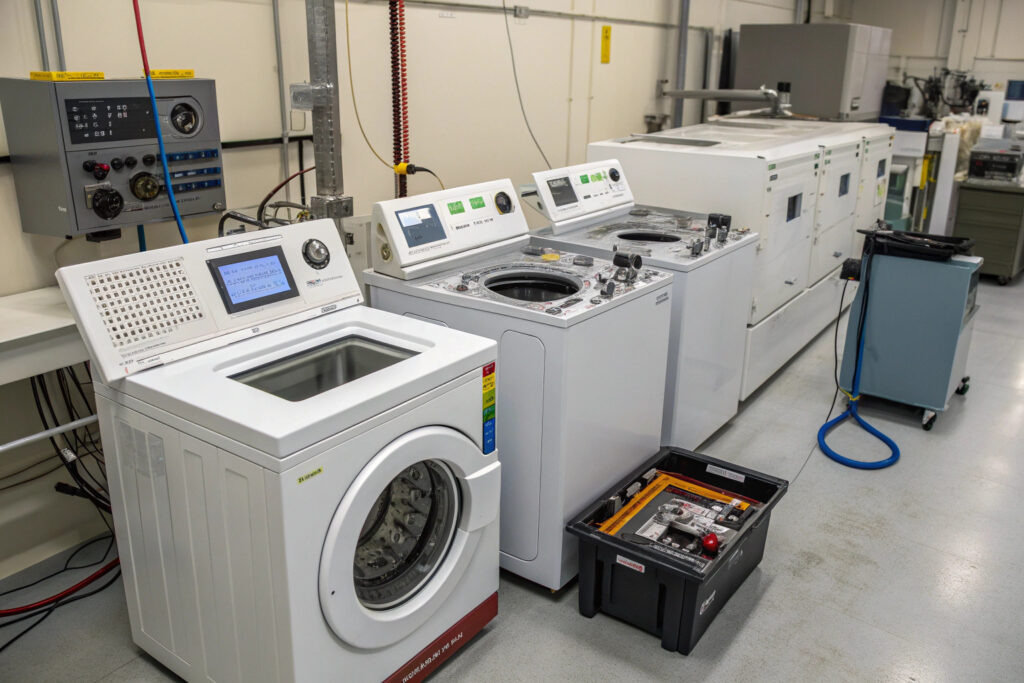
What specialized equipment is required?
Programmable laboratory washers that maintain precise temperature, agitation, and water level controls are essential for consistent results. Additionally, conditioning racks with standard atmospheric control, precision measuring instruments (including graduated templates and digital calipers), and documentation systems for tracking each specimen through multiple cycles create a complete testing environment. Our laboratory uses automated measurement systems that capture 15+ data points per mask for comprehensive dimensional analysis.
How should test specimens be prepared?
Masks are marked with indelible but non-distorting reference points at specific locations: center front, side seams, ear loop attachments, and across critical dimensions. A minimum of 5 specimens per mask style provides statistical significance, with each mask weighed before testing to ensure consistent loading. Our protocol includes photographing each marked specimen before testing to document original appearance and construction details.
What Real-World Conditions Should Testing Simulate?
Beyond standardized protocols, testing should account for how consumers actually use and care for reusable masks.
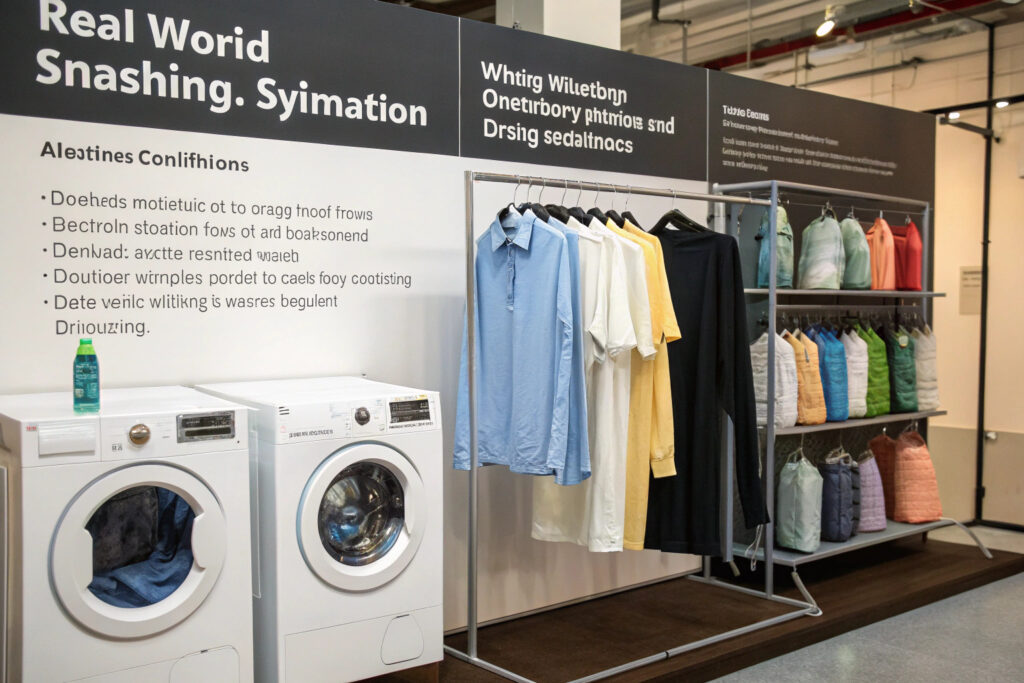
How do different washing methods affect results?
Testing should include multiple washing scenarios to account for consumer variability: gentle cycle with cold water (representing optimal care), normal cycle with warm water (typical consumer practice), and heavy-duty cycle with hot water (worst-case scenario). Our multi-scenario approach has revealed that shrinkage can vary by up to 40% between gentle cold washing and aggressive hot washing for the same mask materials.
What about detergent and drying variations?
Different detergent formulations can impact shrinkage, particularly those with enzymes or bleaching agents. Testing should include both standard reference detergents and common consumer products. Similarly, drying methods significantly influence results—line drying typically produces minimal shrinkage while machine drying, especially at high temperatures, accelerates dimensional changes. Our testing protocol includes three drying methods to provide comprehensive data.
How Do You Interpret and Apply Test Results?
Collecting data is only valuable if properly analyzed and applied to product development decisions.
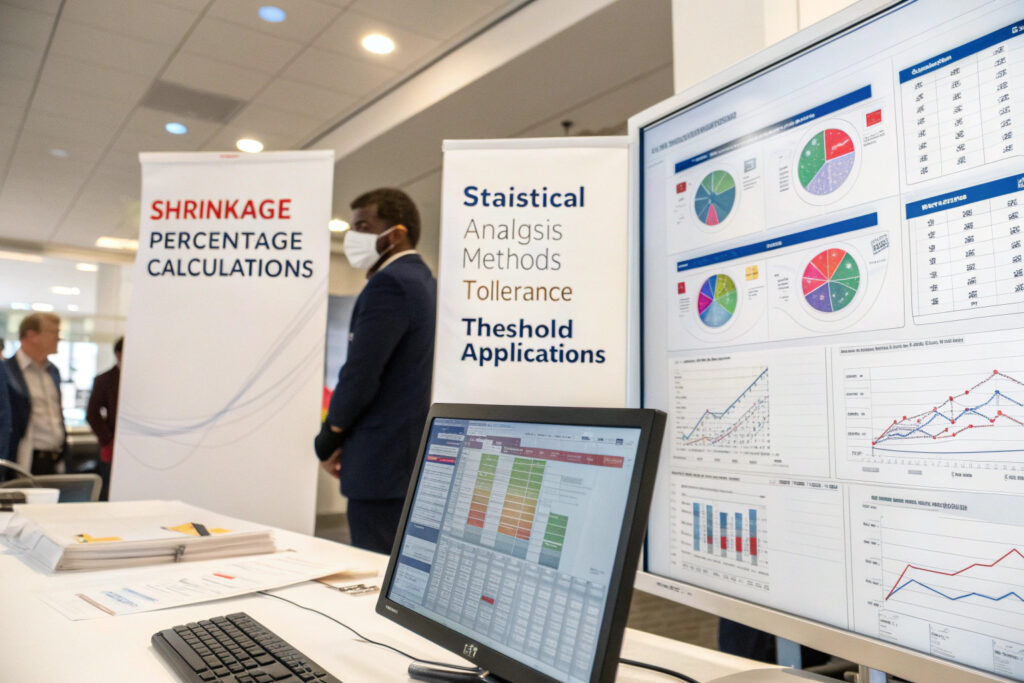
What shrinkage percentages are acceptable?
Industry standards typically consider shrinkage under 3% in either direction as excellent, 3-5% as acceptable for most applications, and over 5% as potentially problematic for proper fit maintenance. However, for masks where precise fit is critical, more stringent limits often apply. Our quality standards require less than 4% shrinkage in any direction after 50 washes for approved materials.
How do results influence material selection and pattern making?
Shrinkage data directly informs pattern engineering decisions—designers can intentionally oversize patterns based on predictable shrinkage to ensure final dimensions match specifications. Additionally, results guide material selection toward fabrics with superior dimensional stability. Our pattern-making process incorporates specific shrinkage allowances for each approved fabric, ensuring consistent final dimensions despite washing.
What Common Failure Modes Does Testing Reveal?
Shrinkage testing often uncovers unexpected interactions between materials and construction methods.
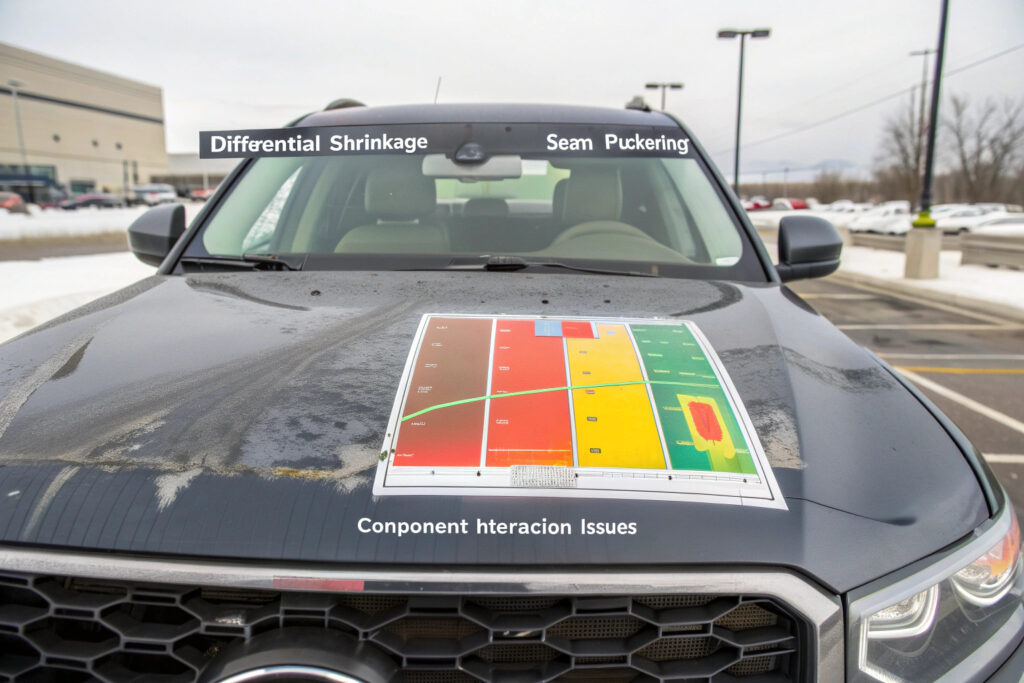
How does differential shrinkage impact mask performance?
Varying shrinkage rates between different mask components (main fabric, elastics, filter layers) can cause distortion, seam puckering, or compromised fit. Testing reveals these interactions before production scaling. Our testing has identified that when face fabric shrinks 3% while inner lining shrinks 5%, significant curling and comfort issues result—leading to revised material combinations.
What about seam and construction integrity?
Seam shrinkage can differ from fabric shrinkage, causing puckering or distortion along stitch lines. Additionally, attachment points for elastics or nose wires may weaken with repeated washing. Our 50-wash testing includes seam strength measurements at intervals to identify construction methods that maintain integrity through the product lifespan.
Conclusion
Testing shrinkage after 50 washes in reusable cloth masks requires systematic application of standardized protocols, precise measurement techniques, and realistic simulation of consumer use conditions. The most valuable testing goes beyond simple percentage calculations to understand how dimensional changes impact fit, comfort, and protection throughout the product's expected lifespan. This data directly informs material selection, pattern engineering, and construction decisions that determine product quality and customer satisfaction.
Investing in comprehensive shrinkage testing prevents costly post-production issues, reduces returns, and builds brand reputation for durability and consistent performance. As reusable masks represent both protective equipment and fashion accessories, maintaining dimensional stability through extended use is essential for both functional and aesthetic reasons.
Ready to implement thorough shrinkage testing for your reusable cloth masks? Contact our Business Director, Elaine, at elaine@fumaoclothing.com to discuss our testing protocols and how we can help ensure your masks maintain their fit and performance through repeated washing. We'll provide detailed shrinkage data and recommendations for optimizing your designs for dimensional stability.

